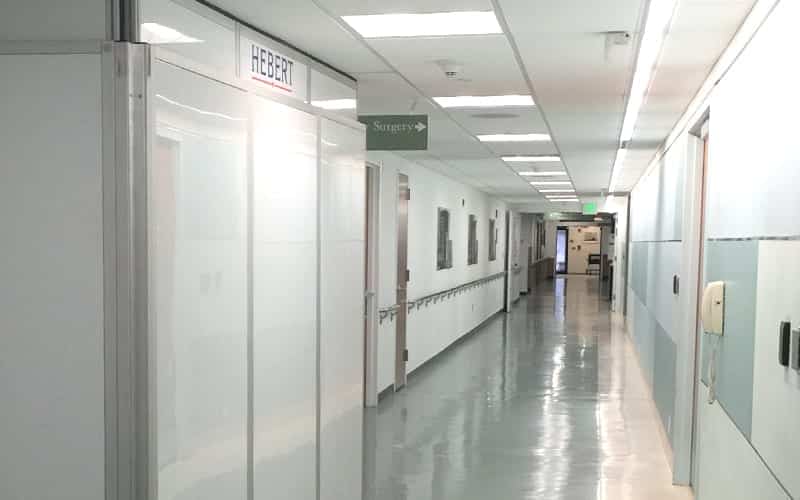
Dust control in healthcare can seem like a never-ending battle. While it’s challenging to keep facilities clean, it’s critical to keep patients safe. Dust can introduce allergens into the air, transport bacteria, and increase healthcare-acquired infections (HAI’s).
According to the Centers for Disease Control (CDC), poor cleaning and dust control in healthcare increase the:
- Probability of contamination
- Vulnerability of patients to infection
- Potential for exposure to pathogens
This is especially important during construction or remodeling when construction dust is unavoidable. Infection Control Risk Assessment (ICRA) Class IV requires healthcare facilities to construct barriers to prevent dust and pathogens from entering patient care areas. Barriers must meet fire codes and prevent fungal spores from penetrating.
Hospitals and healthcare facilities must comply with ICRA requirements and should be a critical consideration when selecting containment systems. That’s why many healthcare facilities will no longer accept plastic sheeting or drywall construction as a solution. These options may not prevent dust and debris from moving freely and, in some cases, can add to the dust problem during construction and tear-down.
Modular Wall Solutions to Meet ICRA Requirements
Instead, healthcare facilities are increasingly using modular wall solutions, such as STARC Systems, for dust control in healthcare. STARC Systems are designed to meet ICRA requirements.
Airtight Seals
Modern modular containment systems have advanced construction techniques far beyond earlier methods. For example, designs include:
- Tongue and groove designs securely engage in a zig-zag pattern to prevent airflow.
- Double-gasketing between upper and lower panels provides two barriers against dust and dirt.
- Gaskets along ceilings, floors, and around doors (including hinges and latches) eliminate dust and airflow transmission.
- Plastic track covers close all gaps and creates flush surfaces.
Negative Air
Negative air effectively isolates airborne particles from confined areas. You need healthcare containment barriers that ensure airtight seals to achieve negative air pressure. Pressure monitors and pressure ports can allow monitoring to maintain optimal pressure levels.
Durable Materials
Plastic sheeting and drywall can be easily damaged during construction, creating additional risk by releasing dust and debris into the space. As such, durable materials must be used for containment.
Materials such as anodized aluminum, galvanized steel, and reinforced polymer provide long-lasting protection and increased cleanability. STARC Systems modular containment solutions for healthcare can withstand hundreds of bleach cleanings and construction damage. This durable solution does not use silicone caulk, which can attract dust, and is reusable for multiple projects, which can also help reduce construction costs.
A Better Solution for Dust Control in Healthcare Construction
STARC Systems’ reusable temporary walls install faster than drywall, are more durable than polycarbonate, and are specifically designed to provide superior containment in even the most demanding situations. Airtight systems are easy to install and exceed ICRA Class IV and ASTM E-84 requirements to protect patients and staff during construction.
Not only do they provide superior dust control in healthcare settings, but they also look great and blend into existing environments to mitigate the disruption of construction and renovation.
To learn more about better dust control in healthcare environments, contact STARC Systems today.
